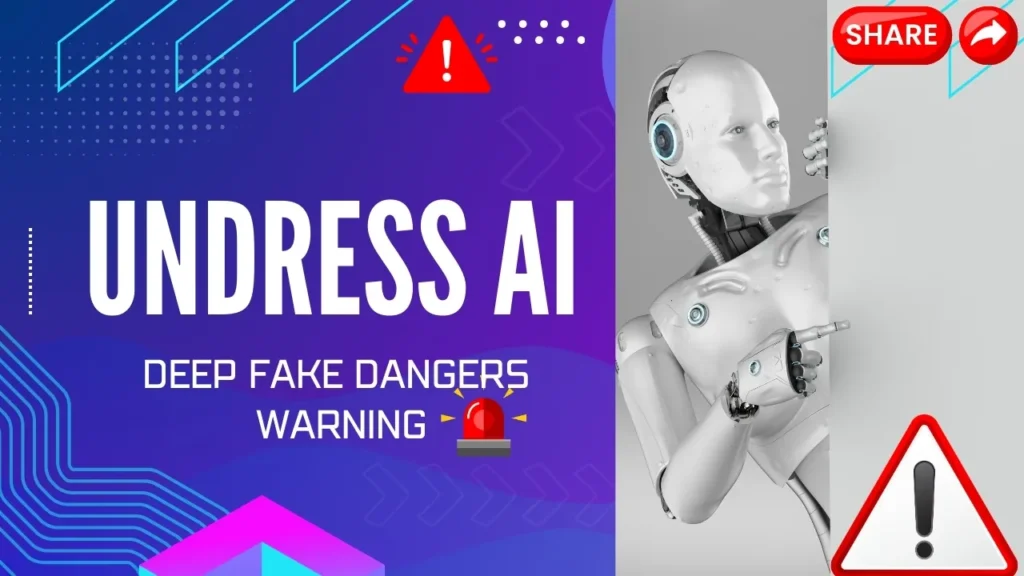In today’s rapidly advancing technological landscape, artificial intelligence (AI) has brought both incredible innovations and serious concerns. One alarming development is the rise of “Undress AI” tools, which use AI to digitally remove clothing from images. For parents and carers, it is critical to understand these tools, their risks, and how to protect young people from their harmful effects.
What is Undress AI?

Undress AI refers to a genre of apps or tools that manipulate images by removing clothing, producing what appear to be nude or semi-nude images. Although the final output is not a true depiction of the individual, the implications of these altered images can be far-reaching and damaging. These manipulated images may be used for extortion, harassment, or abuse, and their circulation can severely harm a child’s reputation and mental well-being.
While these AI-generated images are technically fake, they can lead to real-world consequences like bullying, harassment, and the spread of false information. This makes understanding and addressing the issue a key priority for parents and caregivers.
Risks Posed by Undress AI:
- Exposure to Inappropriate Content: Children and teens are naturally curious, and undress AI tools are often marketed in ways that appeal to this curiosity. These tools might seem harmless or even fun, but they expose young users to inappropriate and harmful content.
- Cyberbullying and Harassment: The ease with which AI can generate fake nude images makes it a tool for cyberbullying. In schools and online communities, manipulated images can be used to humiliate or harass, often leading to severe emotional distress for the victim.
- Involvement in Illegal Activity: Many children might not realize that using these tools is illegal, especially if they alter or share manipulated images without consent. Sharing such content can violate laws regarding privacy, image rights, and in some cases, child sexual abuse material (CSAM).
- Mental Health Impacts: The use of undress AI tools can have a significant emotional toll on children, whether they are the victim of such images or the perpetrator. Guilt, shame, and fear of being exposed to public humiliation can deeply affect a young person’s mental health.
Online Risks and Data Privacy Concerns:
Many undress AI tools operate on unregulated websites with questionable security practices. Children who use these tools may not fully understand the risks of uploading personal images, which could be stored, misused, or even sold to malicious third parties. The vulnerability of their data raises concerns not only about privacy but also the potential for long-term exploitation.
Legal Considerations: Protecting Against Deepfake Harms
Laws are evolving in response to the rise of AI-generated imagery, particularly intimate or sexually explicit deepfakes. As of January 2024 in the UK, it is illegal to share sexually explicit deepfake images without the subject’s consent. However, these laws rely on the intent to harm, making it challenging to prosecute offenders when intent is difficult to prove. Even though significant steps have been taken to address this issue, parents must remain vigilant in helping their children navigate the internet safely.
Guidance for Parents and Carers:
As parents and carers, you can take proactive steps to protect children from the dangers of undress AI:
- Open Communication: Start a dialogue with your child about the potential risks of AI tools like undress AI. Explain the serious consequences, including the legal implications of sharing or altering images.
- Set Boundaries: Establish clear guidelines on the type of content that is acceptable to view and share. Encourage your child to think critically before sharing images online.
- Monitor Online Activity: Use parental controls and privacy settings to limit access to inappropriate websites or apps. Make sure your child understands the risks of uploading personal images.
- Education About Consent: Teaching children about consent and respect for others’ privacy is crucial in combating the misuse of AI tools. Emphasize that manipulating or sharing someone’s image without permission is both wrong and illegal.
- Recognizing Warning Signs: Pay attention to changes in behavior that may signal your child is either a victim or participant in such activities. If you notice increased secrecy or anxiety surrounding their online activities, it’s time to step in.
The Role of Schools and Communities:
Schools and local communities also have a part to play in raising awareness about the dangers of undress AI. Educational campaigns about responsible digital behavior can help equip students with the knowledge to make safer online decisions. Additionally, schools should foster an environment where children feel comfortable reporting bullying or abuse related to AI-manipulated images.
Conclusion:
While the development of undress AI and other deepfake technologies may be advancing rapidly, staying informed is the first step in keeping children safe. By having open conversations, setting clear boundaries, and fostering a sense of respect and consent, parents and carers can play a pivotal role in protecting children from the harms associated with these technologies. The online world presents many opportunities, but also significant risks—let’s work together to ensure it remains a safer space for young people.

My name is Augustus, and I am dedicated to providing clear, ethical, and current information about AI-generated imagery. At Undress AI Life, my mission is to educate and inform on privacy and digital rights, helping users navigate the complexities of digital imagery responsibly and safely.
